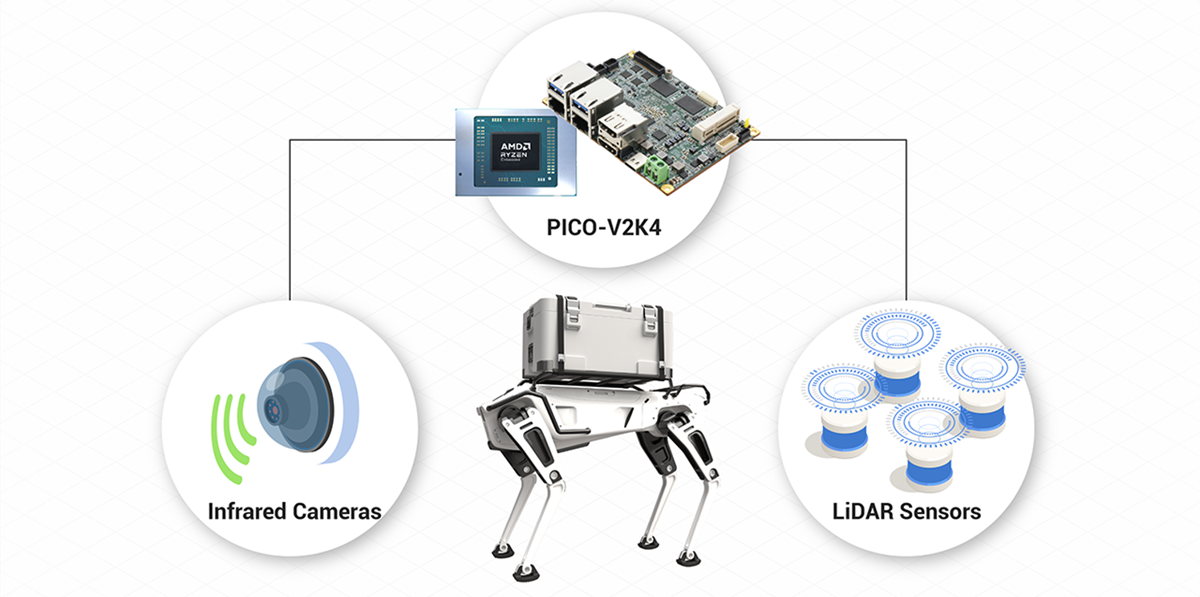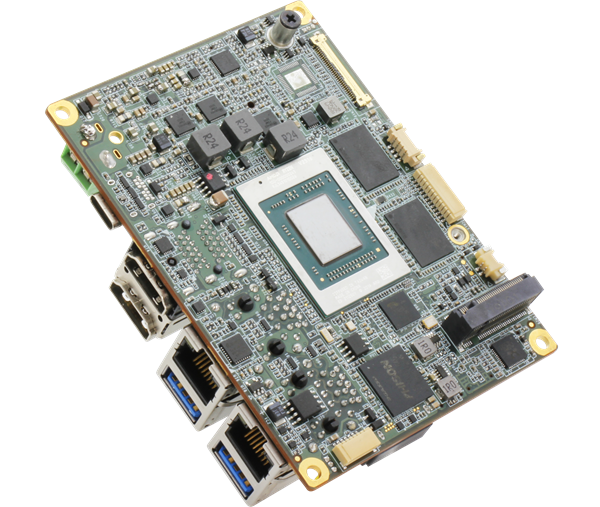- Resources
- Application Stories
- PICO-V2K4 Maintenance Robot

As investment in robotic solutions for heavy industry becomes more widespread, dividends are being paid in the form of increased operational safety and efficiency. One beneficiary has been the energy industry, where the stakes are much higher when utilizing human resources for equipment testing and maintenance due to the tragic consequences of something going wrong.
Additionally, the use of human resources for such tasks present a greater risk of human error, general occupational health concerns, and an inefficient use of resources, given the time-consuming and complex nature of the tasks involved.
For these reasons, a large power station in the United States sought to deploy a robotic solution to undertake its equipment testing and maintenance needs. Due to the station’s large floorspace and variety of equipment, a human solution would require employees to travel large distances and perform analysis of complex equipment in tight, potentially hazardous spaces. Therefore, the company felt that a compact, four-legged robotic unit would be the perfect fit.
Project Needs
Rugged, Durable Design
Continuously burning fuel in order to generate electricity, power stations are very harsh environments by nature, which can manifest occupationally hazardous conditions for human workers to operate in. As a consequence, the company required a product that could function within such an exceptionally harsh environmental setting.
High-Performance Computing
The power station put a great deal of importance on the computing performance of the proposed solution. Due to the intricate analysis and complex processes required to detect equipment errors they placed a premium on accuracy, so the board needed to be powerful enough to receive, process, and analyze complex data via multiple channels, making high computing performance a non-negotiable prerequisite.
Comprehensive Mini PC
To reduce potential maintenance issues caused by the failure of isolated components, the company wanted to power their robot with a board equipped with all necessary functions onboard. Size was also a factor, as the board would need to be small enough to work in zones inaccessible to human employees, such as narrow corridors.
Application Architecture

Through the PICO-V2K4’s 8-bit GPIO and SMBus/I2C support respectively, the robot used sophisticated sensors for device measurement reading while traversing a set route covering the power station’s floorplan through a set path planning algorithm. The board’s substantial onboard NVMe storage made this autonomous route planning possible without the need for additional module installation. By utilizing NVMe 1.3 instead of SATA III, the PICO-V2K4 could maintain substantially faster operation speeds even under heavy loading, given its direct communication with the CPU, rather than having to do so via its motherboard as it would using a SATA III storage module.
To perform regular temperature and defect detection tests on the power station’s pipes, the robot utilized infrared cameras installed via the PICO-V2K4’s dual USB 3.2 Gen 2 interface, which provided high-speed visual data transmission. The images received from its cameras were then analyzed to detect anomalies such as high temperatures, leaks or contamination, but could also process flow rates and pressure values. Due to the board’s wide operating temperature, the robot was able to perform these tasks in close proximity to the equipment.
With all the necessary task functions possible via the board’s integrated ports, connectors, and CPU; the task execution and subsequent evaluation of its findings took place on the edge, saving considerable time and producing more accurate assessments. However, with industrial robotics it is important to note the necessity of checks and balances against full autonomy. As such, the robot was equipped with a return control function for when an abnormality or defect was detected, with the robot sending these results back to the power station’s data center wirelessly.
Why the PICO-V2K4?
WiTAS 2 Certified Temperature Range
The PICO-V2K4 is a WiTAS (Wide Temperature Assurance Service) qualified board with an operating temperature range of -40°F ~ 185°F (-40°C ~ 85°C), meaning it was more than capable of high-level functionality within the harsh environment of the power station. This also meant that the testing and maintenance robot was unrestricted in its deployment setting, being ruggedized and impervious to humid, indoor settings, but also conducive to outdoor use.
AMD Ryzen™ V2000 Embedded Processing Performance
With up to 8 cores and 16 threads of processing power, sophisticated Zen 2 x86 core architecture, and 7nm process technology, the PICO-V2K4’s AMD Ryzen™ V2000 series CPU provided the application with a unique leap in both performance and power-efficiency, particularly on the PICO-ITX form factor. This high-performance computing meant the PICO-V2K4 could process and analyze camera and sensor data quickly, and provide accurate equipment defect and abnormality detection.

Integrated Functionality
Equipped with an AMD Ryzen™ V2000 processor, LPDDR4x system memory, and up to 128GB of NVMe storage onboard, the PICO-V2K4 had all core facets required for deployment integrated, comprehensively meeting the needs of the application without additional components. Further, the board contained a wealth of connectors to provide the robot with peripheral device function, such as two USB 3.2 Gen 2 running at 10Gbps for infrared cameras, four COM ports for LIDAR sensor support, and four simultaneous displays courtesy of HDMI, DP via USB Type-C, and either LVDS or eDP interfaces. The integrity of the defect information returned to the station’s data center was also maintained via onboard TPM 2.0, preventing information security breaches.
Impact

By implementing a robotic solution to address the safety requirements of their equipment, the power station saw huge benefits to their daily operations. Not requiring a human worker to be physically present to perform its safety checks reduced occupational health concerns, and eliminated the exposure of workers to potential hazards. Additionally, the robot’s sophisticated architecture gave the power station’s equipment inspections a greater degree of accuracy, reducing the potential for errors all while making the process more efficient.
On a broader scale, the success of this application revealed that Industry 4.0 solutions have the potential to revolutionize industrial safety practices on a generational scale, providing disaster prevention frameworks to high-stakes, vital industries.





